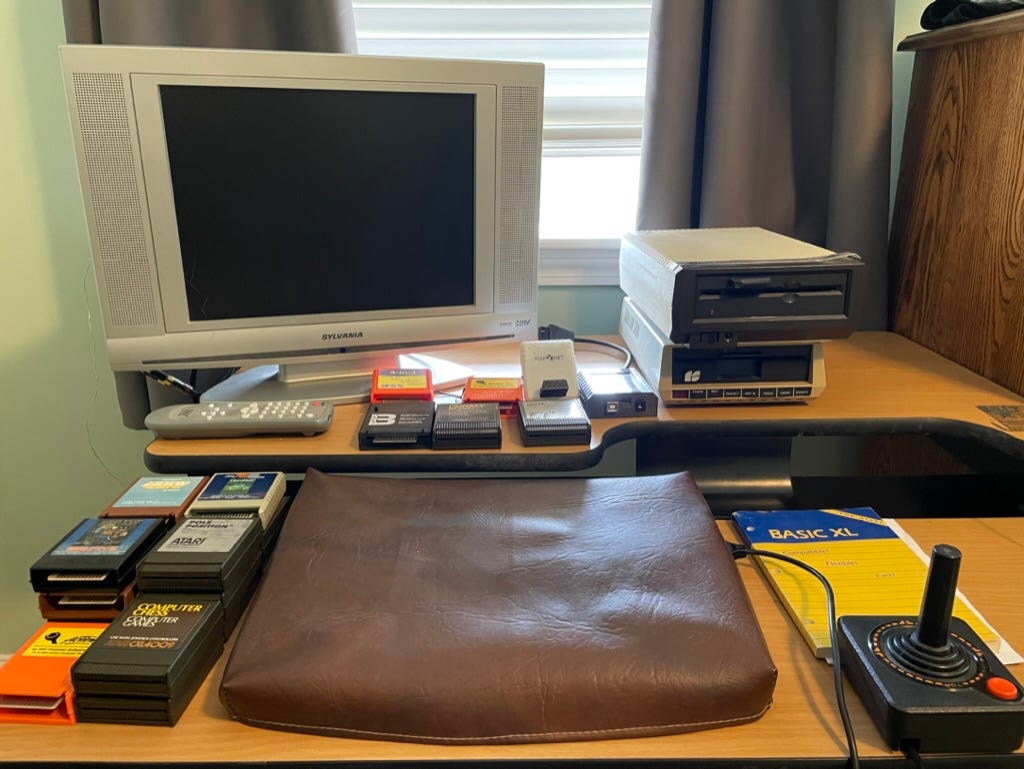Atari 130XE Setup and Modern Add-Ons
8-bit is back on the menu!
It’s been offline for a few months due to lack of space in my office, but I finally have my Atari 130XE set up again for use.
The 130XE (repaired by 8bitAndMore) is working great and I’m eager to start using it again.
For now, I have it hooked up to an LCD display via S-Video. Here you can see it running the Miner 2049er cartridge.


